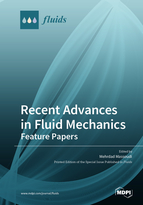Recent Advances in Fluid Mechanics: Feature Papers
A special issue of Fluids (ISSN 2311-5521).
Deadline for manuscript submissions: closed (1 December 2020) | Viewed by 82936
Special Issue Editor
2. Department of Mechanical Engineering, Carnegie Mellon University, Pittsburgh, PA 15213-3890, USA
Interests: multi-component flows; non-newtonian fluids; granular materials; heat transfer; mathematical modelling
Special Issue Information
Dear Colleagues,
This is a collection of top-quality papers from Editorial Board Members, Guest Editors, and leading researchers discussing new knowledge or new cutting-edge developments on all aspects of fluids. All of the accepted papers in this Special Issue will be published free of charge in open access.
Prof. Dr. Mehrdad MassoudiGuest Editor
Manuscript Submission Information
Manuscripts should be submitted online at www.mdpi.com by registering and logging in to this website. Once you are registered, click here to go to the submission form. Manuscripts can be submitted until the deadline. All submissions that pass pre-check are peer-reviewed. Accepted papers will be published continuously in the journal (as soon as accepted) and will be listed together on the special issue website. Research articles, review articles as well as short communications are invited. For planned papers, a title and short abstract (about 100 words) can be sent to the Editorial Office for announcement on this website.
Submitted manuscripts should not have been published previously, nor be under consideration for publication elsewhere (except conference proceedings papers). All manuscripts are thoroughly refereed through a single-blind peer-review process. A guide for authors and other relevant information for submission of manuscripts is available on the Instructions for Authors page. Fluids is an international peer-reviewed open access monthly journal published by MDPI.
Please visit the Instructions for Authors page before submitting a manuscript. The Article Processing Charge (APC) for publication in this open access journal is 1800 CHF (Swiss Francs). Submitted papers should be well formatted and use good English. Authors may use MDPI's English editing service prior to publication or during author revisions.
Keywords
- Fluids feature papers






